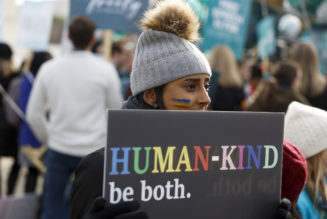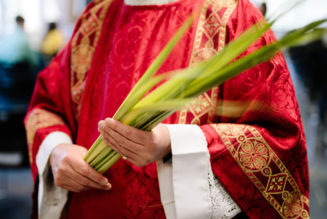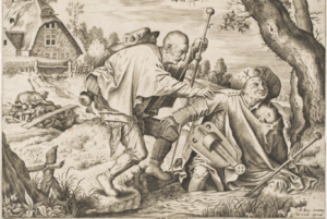
After two decades of intensive revelations, the wounds from priestly sex abuse in the Catholic Church in the United States remain vastly unhealed. Most enduringly, thousands of survivors of abuse remain wounded spiritually, psychologically, emotionally, and relationally. The ripple effects have wounded their families and communities on an exponential scale and have weakened trust among members of the Church more broadly. Large numbers have broken communion with the Church. Other Christian churches also have seen revelations of abuse and are grappling with their responses.
The extent of wounds from abuse and possible healing responses on the part of the Catholic Church were the subject of a consultation that was held at the University of Notre Dame on September 24th, 2021, titled, “The Truth Will Make You Free: What Promise Do National Truth and Reconciliation Processes Offer for the Catholic Church’s Response to the Sexual Abuse Crisis?” The consultation was convened by Dr. Katharina Westerhorstmann of the Department of Theology at Franciscan University and myself, a political scientist at the University of Notre Dame. It was enabled by a grant from the Church Sexual Abuse Crisis Research Grant Program sponsored by Notre Dame’s President’s Office. The event brought together twenty-three scholars, priests, lawyers, survivor advocates, and therapists for a day of intensive discussion. Six of the participants were survivors of sex abuse; one other was seriously affected in his career and ministry. The conversation is conveyed in the rapporteur’s report here.
That wounds persist on a large scale is not to ignore that bishops and other church leaders have responded to the abuse in important and effective ways (as have leaders of other Christian communities). Norms for the protection of minors established in the Dallas Charter of 2002 have made the Catholic Church one of the safest places for youth in American society. The policies that the Vatican set forth in the 2019 document, Vos Estis Lux Mundi, establish accountability for bishops, the Church’s highest level of authority. Bishops and priests have issued apologies and conducted masses of reparation and healing, while dioceses have paid out millions of dollars in reparations. In recent years, 158 dioceses and 24 religious order provinces in the United States have published lists of accused priests and religious. Many bishops, priests, and other religious have extended empathy and support for survivors.
Yet, wounds remain widespread, the members of the consultation agreed. While generalization should never supplant each survivor’s story of injury and response, common patterns emerge. A common claim of survivors is that they never received sincere acknowledgment and pastoral support from the Church. Even ones who secured reparations or saw accountability for their abuser often report that they experienced little empathy or support for the genuine healing of wounds that they suffered at the hands of the clergy. Many report that this failure harmed them more than the abuse itself. Many have left the Church.
Other, related wounds persist as well. Continual headlines with new revelations contribute to the impression that much abuse is still hidden. There remain priests and bishops who have committed or were complicit in abuse who have not met with accountability. Additionally, adult victims of sexual abuse in the context of seminaries, religious orders, parishes, and other ministries have increasingly expressed a need for healing of their wounds that have been largely unaddressed. In the aggregate, the Church has suffered the loss of membership, credibility, and the ability to carry out effective evangelization. The perception is widespread that the Church’s response to abuse has been reactive, piecemeal, and narrowly legal.
What is needed is a response that is proactive, holistic, and restorative. Arguably, such a response begins with telling the full truth about clerical abuse. Making this case is no less than the Chancellor of Germany, Angela Merkel, who said in an interview in 2021 that for the Church to retain a credible voice in matters of justice, the truth about clerical sexual abuse “must come to light.” In September 2021, Pope Francis made the point even more fully:
In speaking to the leaders of the Episcopal Conferences from throughout the world, gathered in Rome in February 2019, I expressed my encouragement so that they might assure [that the] wellbeing of victims might not be sidelined in favor of the misguided concern for the reputation of the institutional Church. Rather, only by facing the truth of these evil practices and of humbly seeking pardon from victims and survivors will the Church find its way to a place where it can be relied upon once again as a place of welcome and safety for those in need. Our expressions of sorrow must be converted into concrete pathways of reform to both prevent further abuse and to give confidence to others that our efforts will bring about real and reliable change. I encourage you to listen to the cry of the victims . . ..
If Chancellor Merkel and Pope Francis are right to place a premium upon truth, how might this be done?
Guidance may be found in the experiences of tens of countries in the past generation who have faced pasts of violence and injustice amidst a transition to a peace settlement or a nascent democracy. The consultation looked at these experiences and asked what lessons could be drawn. One of their most common responses at the nation-state level is a truth commission, over 40 of which have taken place around the globe. The most famous is surely South Africa’s Truth and Reconciliation Commission of 1996-1998, while a more recent model is Canada’s Truth and Reconciliation Commission of 2007 to 2015, which addressed Canada’s history of abuse in its Indian Residential Schools. Where national truth-telling processes have been strong and robust, they have been lauded for their restorative effects, not least by victims and victim organizations.
The logic motivating truth commissions is that a full accounting of the truth about systemic past injustice can enable a country to build a stable and just future. Three more specific fruits of truth commissions hold promise for the Catholic Church, just as they do for nation-states. First, a full revelation of the truth, usually in the form of a comprehensive report, publicly condemns past injustices, which may continue to enjoy legitimacy, creates confidence that crimes are not being covered up, and, through these achievements, confers credibility upon a political regime – or a church. Second, the most robust truth commissions succeed in revealing not merely “forensic truth,” meaning the full facts about injustices, but also “healing truth,” that is, truth that contributes to the restoration of victims. In countries such as South Africa, Rwanda, Guatemala, and Canada, victims told their stories in the presence of sympathetic listeners, including loved ones, community members, government officials, and sometimes even perpetrators or their surrogates. Third, revealing the truth can have a “multiplier effect” in begetting further restorative practices, including repentance, reparations, accountability, the building of memorials, forgiveness, and reconciliation. Truth is not only invaluable in itself but also necessary for additional steps.
Perhaps the greatest criticism of truth commissions is that they raise expectations of healing and restoration that they cannot fulfill. The best way to alleviate this pitfall is to avoid viewing them as a “one and done” endeavor. A truth commission could be complemented by local forums such as the restorative justice healing circles that have taken place in the Minneapolis and Milwaukee Archdioceses. In Chicago, a healing garden serves as a memorial to abuse victims and as an invitation to practices of remembrance such as masses devoted to the healing of survivors. A national healing garden, modeled on this one, could serve to nurture and maintain a healing dynamic. Both the healing circles and the healing gardens were discussed at the consultation.
Telling the truth, along with other practices that aim to bring healing to the manifold wounds of abuse, manifests the restorative logic at the heart of the Christian Church: God’s reconciliation of the world to himself through the cross and resurrection of Jesus Christ. For Catholics, this reconciliation is made available to humans through the Eucharist. Jesus’ sacrifice restores right relationship through solidarity with victims, calling perpetrators to repentance, enacting and enabling forgiveness, and bringing about spiritual and emotional healing. In proactively practicing reconciliation, the Church would display Christ and offer a model for other churches, religious communities, and civil society institutions who, as is becoming ever clearer, face their own troubled histories of sexual abuse.
The time is right to explore the establishment of a truth commission for the Catholic Church in the United States. Several of the participants in the consultation expressed interest in pursuing this idea further. Might there be participation or cooperation with other Christian churches?
A truth commission is a big idea. For it to take place, many questions would have to be answered. Who would convene the commission? Finance it? Would testimonies be confidential or public? What legal issues would have to be surmounted? Of course, there are many respects in which the Church is not a sovereign state. Yet, were such an endeavor undertaken, the boldness and faith that would be required to enact it would surely also find solutions to these many questions. Even more so, the Catholic Church – and other churches – would be empowered in their message and its mission.
Related
Join Our Telegram Group : Salvation & Prosperity









